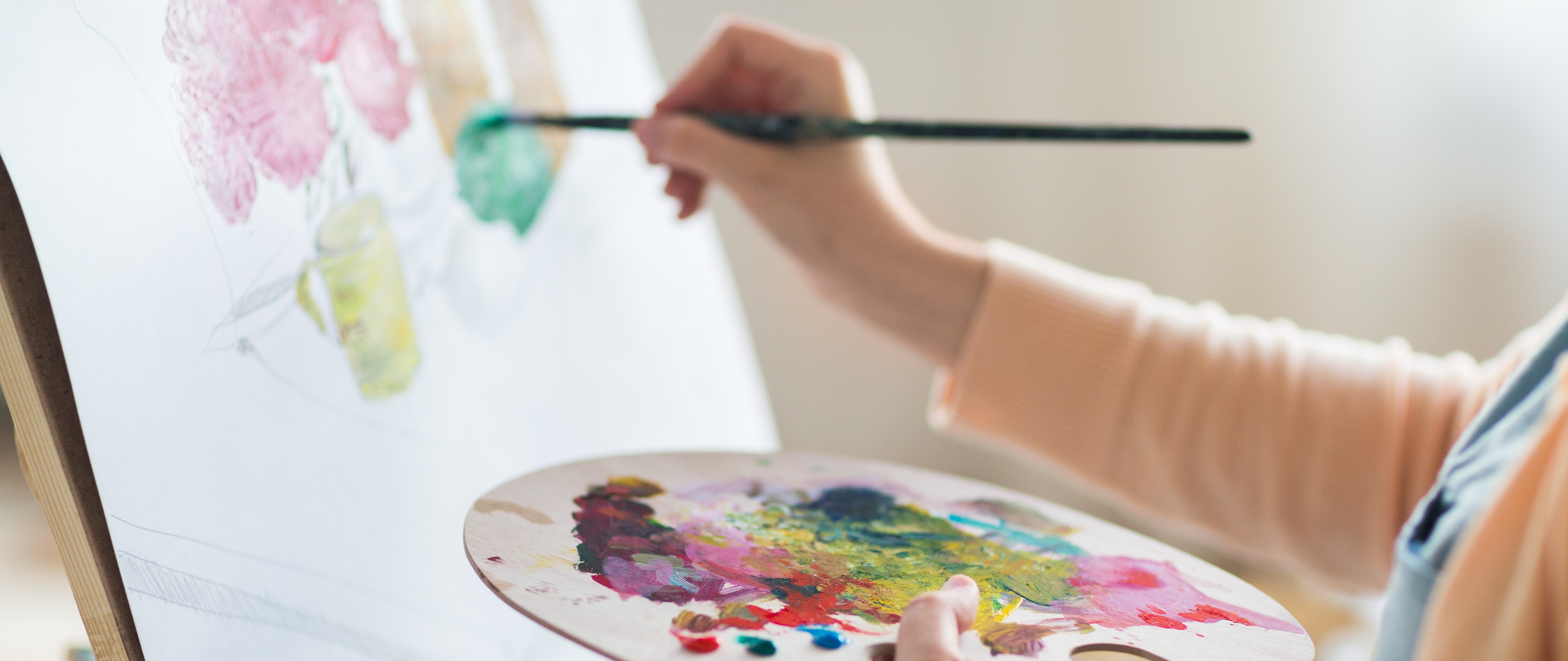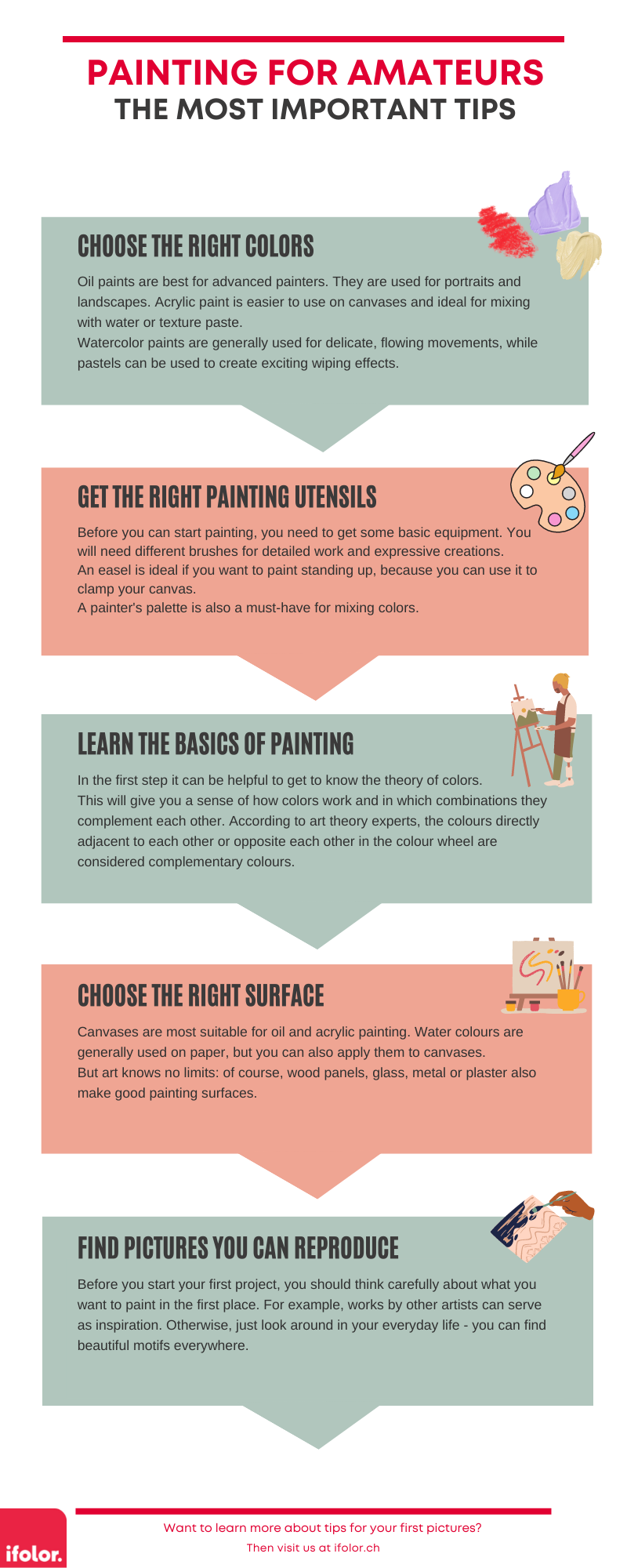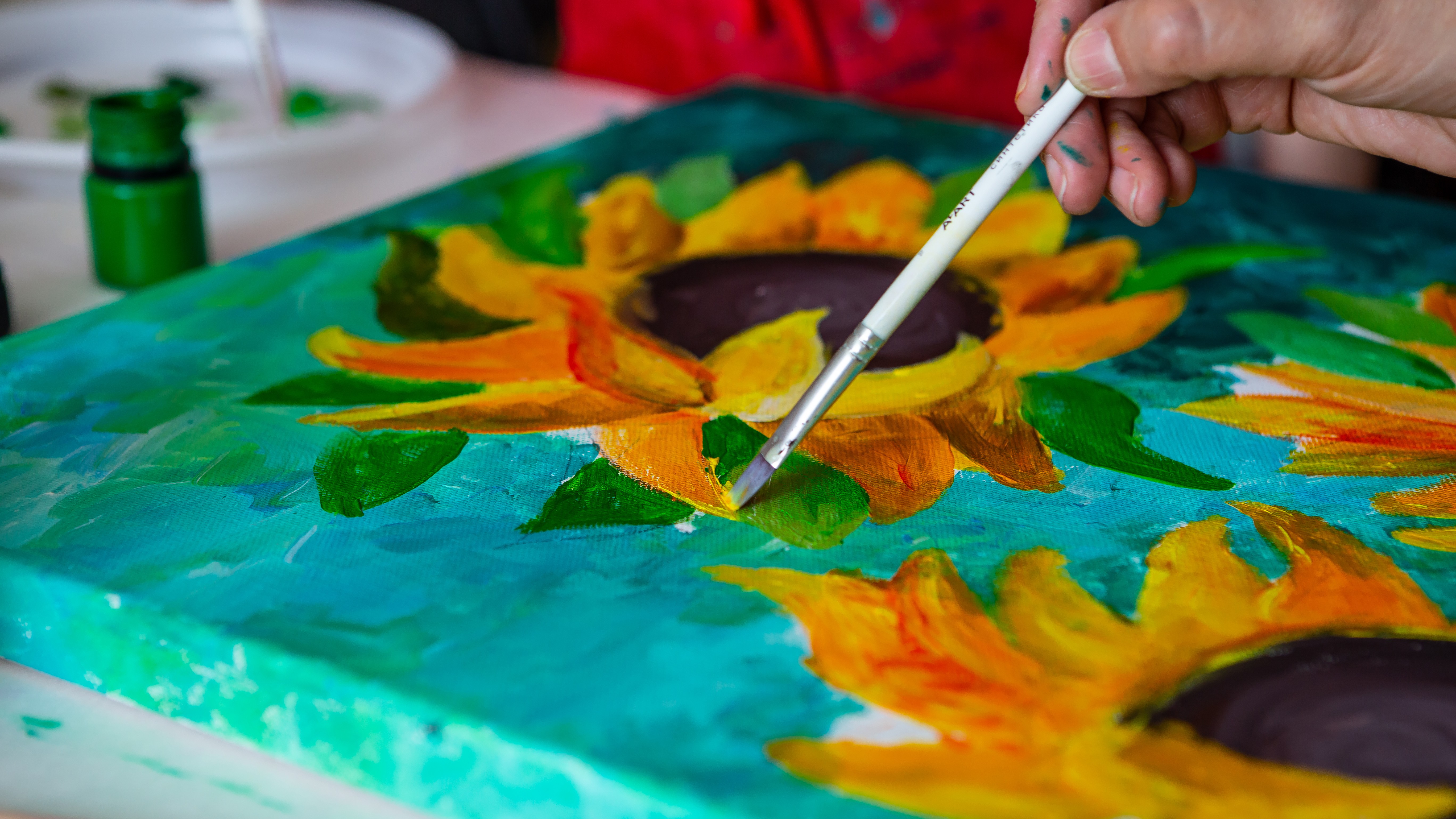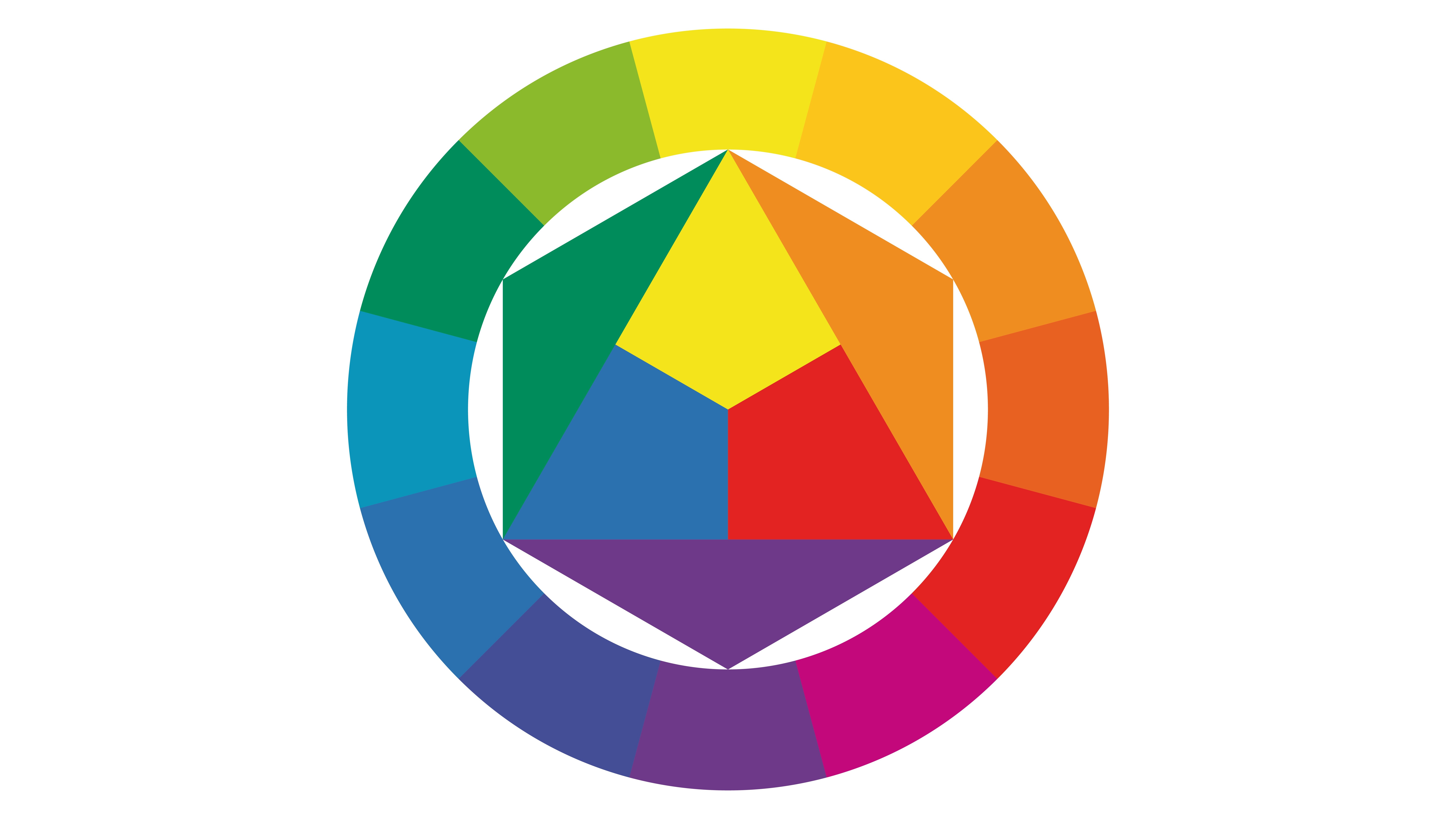
Painting for amateurs: The most important tips for your first pictures
You like art and would like to creatively express yourself? However, you don’t know where to start, and are overwhelmed by all the options. No worries because in this article ifolor will give you a detailed overview of how you can very easily learn to paint. Whether water colours, pastels or oil paints, we will introduce you to the most important painting techniques, and show you helpful tips to ensure your first pictures are an artistic success.

Learning to paint – is that even possible?
You like art and would like to creatively express yourself? However, you don’t know where to start, and are overwhelmed by all the options. No worries because in this article ifolor will give you a detailed overview of how you can very easily learn to paint. Whether water colours, pastels or oil paints, we will introduce you to the most important painting techniques, and show you helpful tips to ensure your first pictures are an artistic success.
The four most well-known painting techniques at a glance
The great thing about painting is that it’s incredibly diverse. Particularly the different types of colours and techniques are one reason why painting never gets boring. Depending on what kind of motif or picture you would like to paint, some colours may be better suited for this. So, if you would like to learn to paint, take a look at the four most well-known painting techniques, and learn about their strengths and weaknesses. Simply experiment, and you will realise which colours are the right ones for your projects.
Painting with oil colours
Oil painting is one of the main ways to creatively express yourself on a canvas. However, this painting technique is anything but simple. It is even regarded as the most challenging painting style. For many centuries, artists such as Van Gogh, Monet und Cézanne used oil painting to create world-famous works. As the name suggests, the main component of oil painting is oil. Oil painting is particularly popular because of its durability and high colour intensity, and it is particularly used for portrait, landscape and still life paintings. Because you generally work with several layers until the picture is completed and mixing the colours requires some practice, oil painting is more suitable for advanced artists.
Painting with acrylics
Acrylic paints are the cheaper and easier alternative to oil paints. So, if you would like to create a painting that resembles an oil painting, these are an ideal choice. They are meanwhile part of the standard arsenal of many artists because they are so versatile to use. For example, if you mix them with some water, you can create pictures that resemble water colours. On the other hand, if you add some modelling paste, you can give your paintings special effects by applying the paint with a palletknife. Another thing that makes acrylics so popular is their fast drying time and easy application, so that they’re perfect for beginners.

Painting with water colours
You undoubtedly know water colours from your school art lessons. Because they are extremely easy to apply, they are also very popular with children. But this doesn’t mean that only children should use them. There are plenty of artists who exclusively create their works with water colours. Water colours are particularly suitable if you are interested in delicate colours and flowing movements. Please note: because they are water-based, these are translucent colours that are generally applied to paper.
Painting with pastels
Pastel painting combines various aspects of painting with those of drawing. Here, too, the paint is applied to paper instead of a canvas. The colours are either pigments, pastel chalks or pastel sticks. Probably the biggest advantage of pastel painting is the fact that the colour doesn’t have to dry, as these are not liquid colours, but crayons, and you don’t need any additional medium such as a brush. This makes it very easy to create your art outdoors. Don’t worry about the unusual chalky film. You can use your fingers to easily work this into the picture, and create exciting effects.
These painting utensils are essential
Before you start painting, you need some basic tools. Of course, what you get depends on the type of painting you want to take up. There are however a few essentials:
- Brushes: Brushes are absolutely essential for painting. You can choose between flat and round brushes. Flat brushes are normally the typical brushes for oil and acrylic painting as they are very versatile. The broad side is ideal for painting large areas. The narrow side can be used for lines and details. Round brushes are generally used for details. These brushes are available in different sizes: while fine brushes are more suitable for intricate, detailed work, large brushes are used for expressive designs. Also pay attention to the texture of the brush hairs. If you would like to create an acrylic painting, brushes with synthetic hairs are the right choice. On the other hand, brushes with natural hairs are particularly suitable for oil and water colour paintings. Ideally, start out by buying five to six different brushes.
- Easel: Would you like to feel like a real artist? Then you need an easel. An easel is the stand on which you can hold your canvas. When buying the easel, make sure the height of the crossbar can be adjusted to the size of the painting.
- Palette: A paint palette is a small, oval-shaped board that is usually made of plastic. But you can easily make your own from a piece of cardboard. Normally, it includes a thumb hole, so that your hand is relaxed when holding it. It is generally used to mix colours.
Use these tips for a successful start to your painting
Once you have bought paints and painting utensils, you can finally start your first project! To ensure your first pictures are a complete success, it’s worth taking a look at the following tips before you get started:
Learn the basics of painting
Although most artists created great works of art without knowing colour theory, it may be helpful for you to first familiarise yourself with this. This will give you a sense of how colours work and in which combinations they complement each other. No doubt you are familiar with the colour wheel. It contains the primary colours red, blue and yellow that cannot be mixed from other colours. If you mix the primary colours together, you will get the secondary colours orange (made of red and yellow), green (made of yellow and blue) and purple (made of blue and red). Then, there’s the tertiary colours. These are different shades of the secondary colours, and are created when you mix a primary colour with a secondary colour (e.g. red mixed with purple is bright pink). According to art theory experts, the colours directly adjacent to each other or opposite each other in the colour wheel are considered complementary colours.

Choose the right surface
The most standard painting surfaces are canvas, cardboard and paper. Canvases are most suitable for oil and acrylic paintings. Water colours are generally used on paper, but you can also apply them to canvases. But art knows no limits: of course, wood panels, glass, metal or plaster also make good painting surfaces.
Find pictures you can reproduce
The final tip from ifolor is pretty much the most important one of all: before beginning your first project, carefully consider what you want to paint. You may find inspiration in the work of other artists. Otherwise, simply take a look around in your everyday life. You will find beautiful motifs everywhere.
We hope that this was helpful for your first adventures in painting. If you would like to give your creativity free rein away from brush and canvas, check out our photo albums and wall decorations . Or design your own photo calendar! With ifolor there really are no limits. Have fun being creative!
